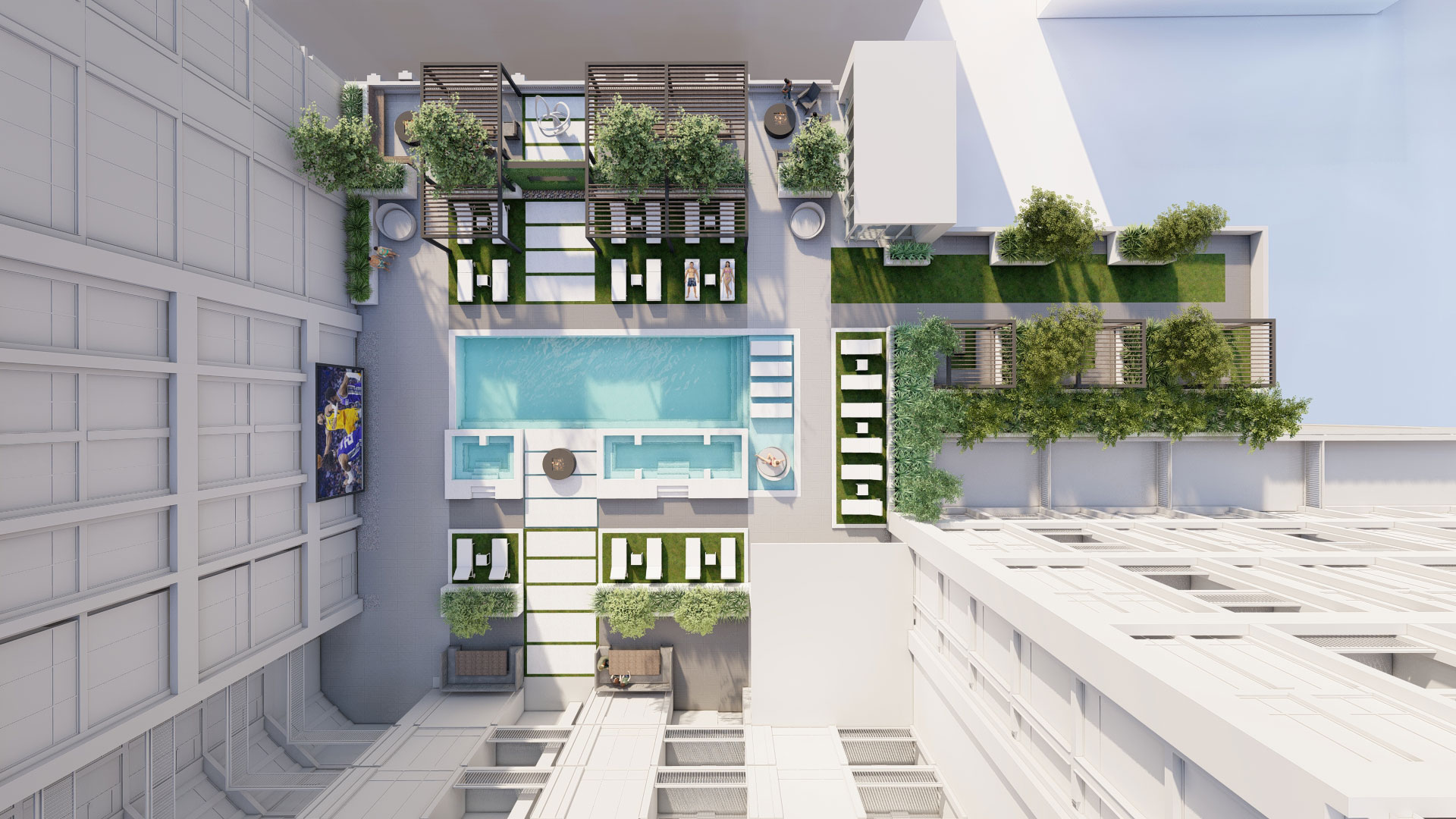As the supply chain levels out and pandemic-era demand abates, most newly-built apartments will compete for the same (relatively) small group of renters with top incomes. Many of these projects face the possibility of prolonged lease-ups, rent cuts, and concessions.
Expense control in this situation is understandably your number one priority. To protect capital, certain features many developers might deem unnecessary are likely to get cut from your plans. But consider the impact of rooftop amenities on the marketability of your property. Well-designed rooftop amenities not only attract residents, but also limit turnover.
Is Developing Urban Multifamily Real Estate with Rooftop Amenities Still a Good Idea?
Protecting occupancy is a key way rooftop amenities keep your expenses down. Another is limiting turn costs. But it’s still critical for urban apartment developers to be careful with how they use their capital to get the largest returns on their projects.
Rooftop amenities can be a lucrative investment, but they do come with a unique set of challenges. There are several financial risks associated with rooftop amenities for urban multifamily real estate development projects, including:
- Cost overruns
- Low occupancy rates
- Maintenance and repair costs
- Liability and insurance costs
- Obsolescence
Here are some tips to help you mitigate these risks, protect your capital investment and ensure a positive rooftop amenity ROI.
1. Conduct Thorough Market Research for Your Multifamily Development
Before you invest in rooftop amenities, it’s important to conduct thorough market research to determine what amenities are most in demand in the area. It’s a good idea to get input from those who will occupy your space when deciding on which amenities to include. This can help you determine which amenities are most important to potential residents and can help you avoid misspending funds on amenities that may not resonate.
But, it’s not enough to provide the same amenity package that your competitors have. Use your research efforts to determine what is missing in the market. Then provide the amenities and features that residents wish they had that aren’t currently available anywhere else.
Make sure you have a clear understanding of who your target demographic is. Narrow it down to the point where you can make decisions based on who your ideal residents are and what they want. Too often apartments market to a group that is too broad. There isn’t any meaningful distinction between what potential occupants want to experience and what they see at another apartment building.
2. Focus on Durability and Maintenance of Your Amenities
Rooftop amenities are exposed to the elements and are subject to wear and tear. It’s important to invest in durable materials and to have a maintenance plan in place to keep your amenities in good condition. Misspending funds on cheap materials or neglecting maintenance can lead to even more spend on costly repairs and replacements down the line.
But that doesn’t mean you should limit your space to only low-maintenance features. Every design should strike a balance between the reality of maintenance and the experience residents will have in the space. Know when to avoid higher maintenance features and when to embrace them. Have a clear vision and purpose for the space and a plan on how you will keep it functioning and looking great as people use and enjoy it.
3. Invest in Rooftop Safety
Rooftop amenities can be dangerous if not properly designed and maintained. It’s important to invest in safety features such as railings, non-slip surfaces, and proper lighting. This will not only protect your residents, but it will also protect your investment from potential lawsuits due to accidents.
Rooftop amenities are unique spaces where a range of building codes apply depending on the construction type. As rooftop amenities become more common, we expect them to become increasingly regulated. In the meantime, it’s important to work with licensed design experts who understand current regulations and codes. They can anticipate potential safety issues and address them during the design process.
4. Consider the Cost-Benefit Ratio of Your Project
When deciding on which amenities to include, it’s important to consider the cost-benefit ratio. Will the amenities attract enough renters to justify their cost? Will your amenities add value to the property? It’s important to strike a balance between offering attractive amenities and keeping costs under control.
But don’t let cost concerns get in the way of good concepts — especially in the early stages of design. It’s important to allow your team to explore plenty of big ideas before you commit to a design. Big design moves are often worth the expense if they’re done right. And, as discussed earlier, failing to stand out in the market carries its own risk.
5. Hire Experienced Rooftop and Outdoor Amenity Specialists
Developing rooftop amenities requires expertise in design, construction, and maintenance. It’s important to hire experienced professionals who can ensure your amenities are built to code, are safe, and will last for years to come.
If you want to take full advantage of your rooftop amenities, work with design experts who are creative. They will make your property stand out. A rooftop amenity design expert can provide you with valuable information and insight that you can’t get anywhere else.
Ensure a Positive Rooftop Amenity ROI
By following these tips, you can protect your capital investment and ensure a positive rooftop amenity ROI. Remember to conduct thorough market research, focus on durability and maintenance, invest in safety, consider the cost-benefit ratio, and hire experienced professionals.
